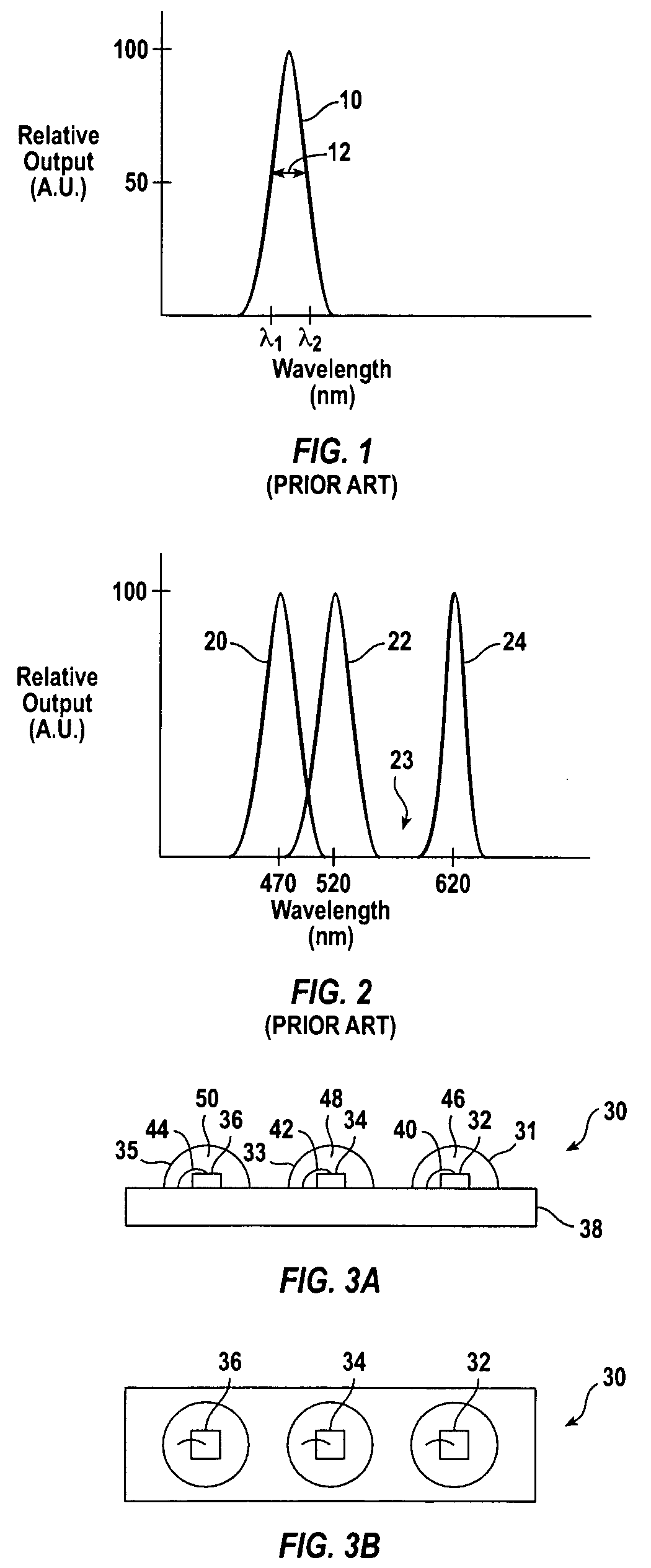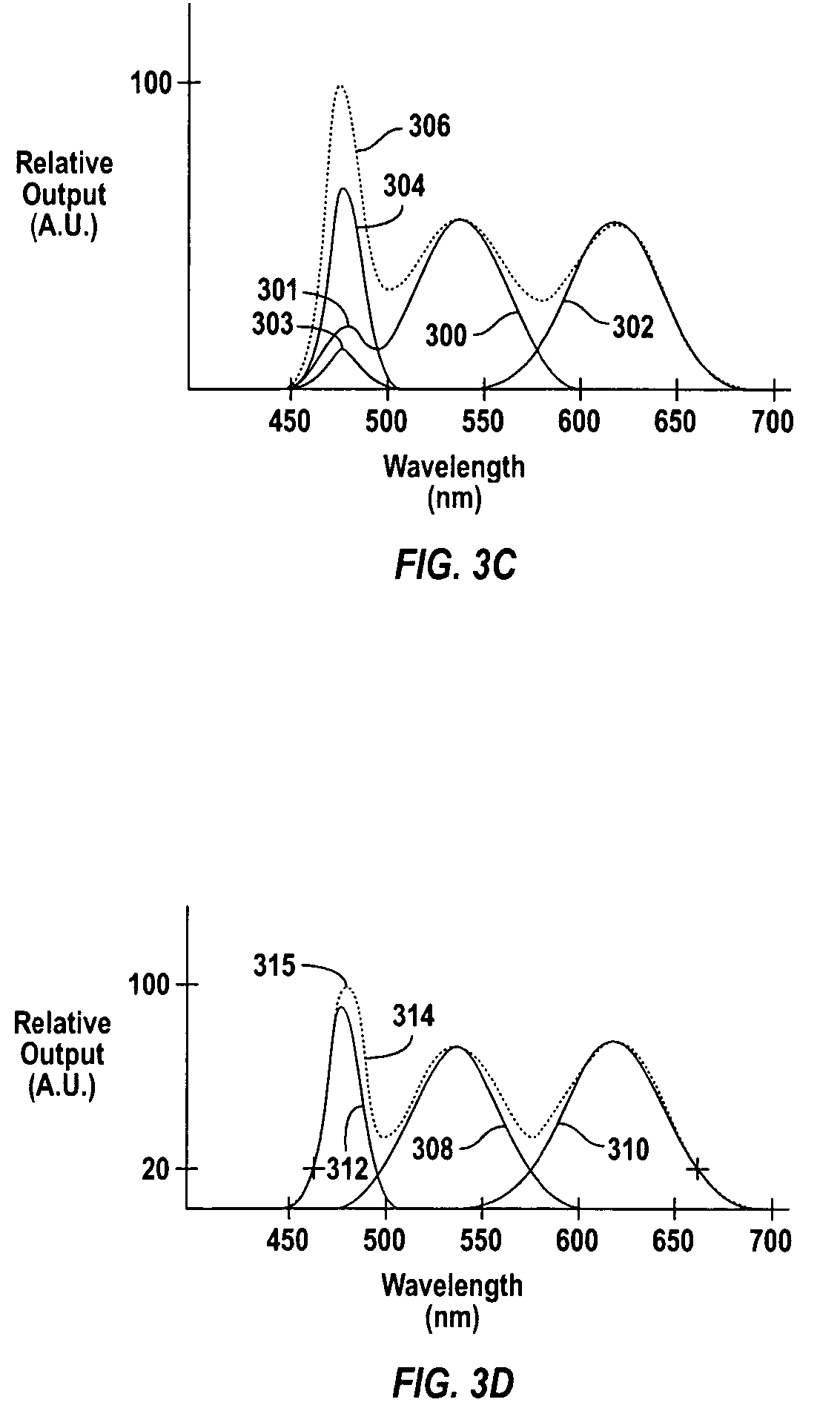Light-emitting diode flash module with enhanced spectral emission
a technology of enhanced spectral emission and light-emitting diodes, which is applied in the field of light-emitting diodes (“ leds”) devices, can solve the problems of poor image quality and unsatisfactory combined spectral emission of these three leds
- Summary
- Abstract
- Description
- Claims
- Application Information
AI Technical Summary
Benefits of technology
Problems solved by technology
Method used
Image
Examples
Embodiment Construction
I. Introduction
[0026]Prior art flash modules tend to be peaky and discontinuous. The dips between spectral peaks can result in poor color fidelity. In particular, a combined spectral emission such as the one shown in FIG. 2 is missing spectral emission in the greenish-yellow region. A combined spectral emission lacking in light in this region will not be able to faithfully reproduce a good color image of the subject. This problem is particularly bad if the spectral reflectivity of the subject lies primarily where the spectral emission of the flash module is weak or missing.
[0027]The spectral emission of a flash module can be improved by using LEDs that have large FWHMs, such as greater than 50 nm. In one embodiment, at least one of a red LED, a green LED, and a blue LED has an FWHM greater than 50 nm. In a further embodiment, at least two of a red LED, a green LED, and a blue LED have FWHMs greater than 50 nm. In a yet further embodiment, each of a red LED, a green LED, and a blue L...
PUM
 Login to View More
Login to View More Abstract
Description
Claims
Application Information
 Login to View More
Login to View More - R&D
- Intellectual Property
- Life Sciences
- Materials
- Tech Scout
- Unparalleled Data Quality
- Higher Quality Content
- 60% Fewer Hallucinations
Browse by: Latest US Patents, China's latest patents, Technical Efficacy Thesaurus, Application Domain, Technology Topic, Popular Technical Reports.
© 2025 PatSnap. All rights reserved.Legal|Privacy policy|Modern Slavery Act Transparency Statement|Sitemap|About US| Contact US: help@patsnap.com



